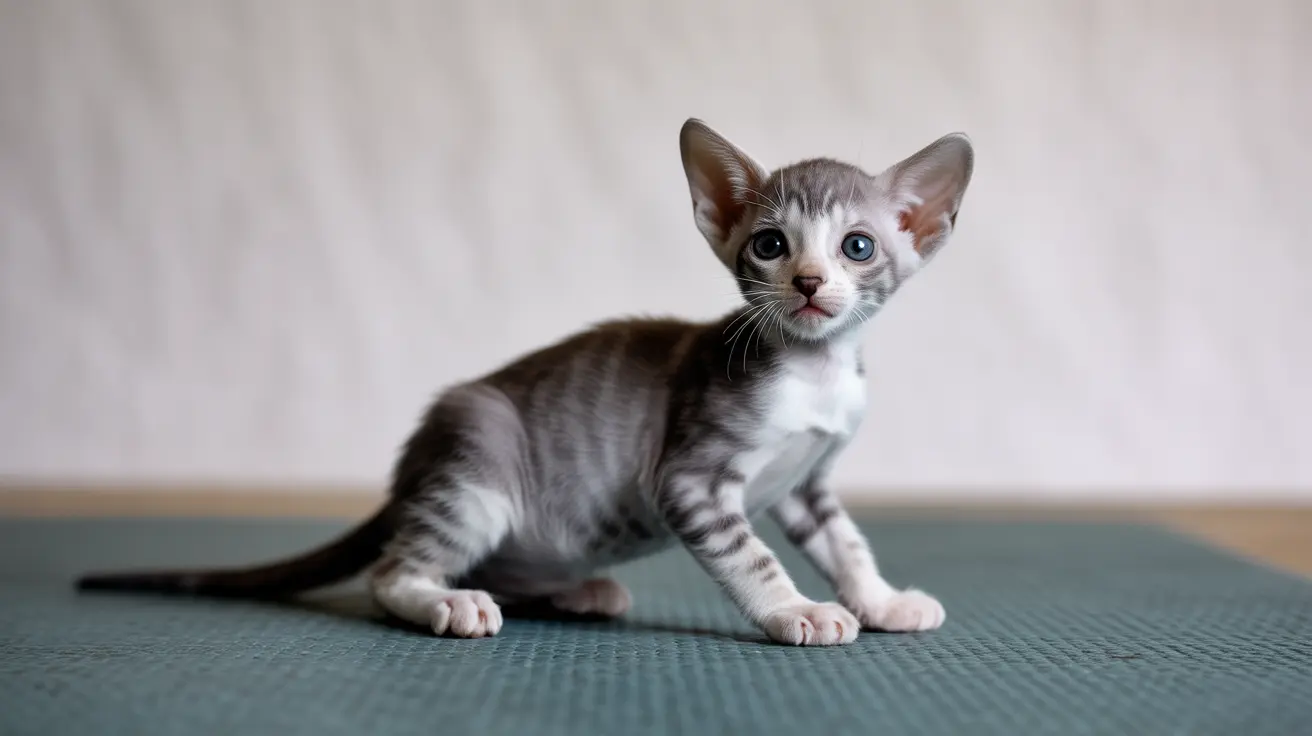What is Swimmer Syndrome in Cats?
Swimmer syndrome, also known as swimming-puppy syndrome or flat-chested kitten syndrome, is characterized by the inability of kittens to bring their legs underneath their body. Instead, their limbs, particularly the hind legs, splay outward, making them appear as if they're swimming when attempting to move.
The condition typically becomes apparent when kittens should begin standing and walking, usually around 15-21 days of age. Without proper leg positioning and muscle development, affected kittens struggle with basic mobility and may experience difficulties nursing.
Recognizing the Signs and Symptoms
Early detection is crucial for successful treatment. Key indicators include:
- Legs splayed out to the sides in a frog-like position
- Inability to stand or walk properly
- Flat chest from lying in a prone position
- Difficulty reaching the mother to nurse
- Swimming motion when trying to move
- Delayed physical development compared to littermates
Causes and Risk Factors
While the exact cause of swimmer syndrome in cats remains unclear, several factors may contribute to its development:
- Genetic predisposition
- Maternal nutrition during pregnancy
- Muscle and ligament development issues
- Possible breed susceptibility (particularly in Siamese cats)
- Environmental factors affecting early development
Treatment Approaches
Treatment for swimmer syndrome requires a multi-faceted approach:
Physical Therapy and Exercise
- Regular assisted standing exercises
- Controlled movement practice on non-slip surfaces
- Muscle-strengthening activities
- Supervised swimming therapy (in some cases)
Limb Management
Veterinarians often recommend:
- Professional taping or bandaging of affected limbs
- Custom-fitted support devices
- Regular adjustment of supportive materials
- Careful monitoring for skin irritation or circulation issues
Environmental Modifications
- Non-slip floor surfaces
- Supportive bedding
- Controlled exercise areas
- Easy access to food and water
Prevention and Management
While complete prevention may not be possible, certain measures can help reduce risks:
- Ensuring proper maternal nutrition during pregnancy
- Regular veterinary check-ups during pregnancy
- Early intervention when signs first appear
- Maintaining appropriate environmental conditions
Frequently Asked Questions
What are the early signs of swimmer syndrome in kittens that I should look for?
The earliest signs include legs splaying outward instead of being positioned under the body, inability to stand or walk normally, and a swimming motion when attempting to move. These symptoms typically appear between 7-21 days of age.
How do veterinarians diagnose swimmer syndrome in cats without specific tests?
Diagnosis is primarily based on clinical observation of the characteristic posture and movement patterns. Veterinarians will assess the kitten's ability to stand and walk, along with examining muscle tone and joint flexibility.
What are the most effective treatments and physical therapy methods for swimmer syndrome in kittens?
The most effective treatments include a combination of limb taping/binding, regular physical therapy exercises, and environmental modifications. Physical therapy typically involves assisted standing, supported walking exercises, and muscle-strengthening activities.
Can swimmer syndrome in cats be prevented through maternal nutrition or care during pregnancy?
While not guaranteed, ensuring proper maternal nutrition during pregnancy may help reduce risks. A balanced diet rich in essential nutrients and regular veterinary care during pregnancy is recommended.
What is the typical recovery outlook for kittens treated early for swimmer syndrome?
Kittens receiving early intervention typically have an excellent prognosis. Most achieve normal mobility within weeks to months of consistent treatment, though recovery time varies based on severity and treatment adherence.






